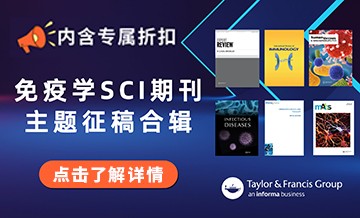当前位置:
X-MOL 学术
›
Adv. Funct. Mater.
›
论文详情
Our official English website, www.x-mol.net, welcomes your
feedback! (Note: you will need to create a separate account there.)
Conjugated Molecules “Bridge”: Functional Ligand toward Highly Efficient and Long‐Term Stable Perovskite Solar Cell
Advanced Functional Materials ( IF 18.5 ) Pub Date : 2019-02-04 , DOI: 10.1002/adfm.201808119
Hua Dong 1, 2 , Jun Xi 3 , Lijian Zuo 4 , Jingrui Li 5 , Yingguo Yang 6 , Dongdong Wang 7 , Yue Yu 7, 8 , Lin Ma 8 , Chenxin Ran 1, 2 , Weiyin Gao 1 , Bo Jiao 1 , Jie Xu 1 , Ting Lei 1 , Feijie Wei 1 , Fang Yuan 1 , Lin Zhang 1 , Yifei Shi 1 , Xun Hou 1 , Zhaoxin Wu 1, 2
Advanced Functional Materials ( IF 18.5 ) Pub Date : 2019-02-04 , DOI: 10.1002/adfm.201808119
Hua Dong 1, 2 , Jun Xi 3 , Lijian Zuo 4 , Jingrui Li 5 , Yingguo Yang 6 , Dongdong Wang 7 , Yue Yu 7, 8 , Lin Ma 8 , Chenxin Ran 1, 2 , Weiyin Gao 1 , Bo Jiao 1 , Jie Xu 1 , Ting Lei 1 , Feijie Wei 1 , Fang Yuan 1 , Lin Zhang 1 , Yifei Shi 1 , Xun Hou 1 , Zhaoxin Wu 1, 2
Affiliation

|
Interfacial ligand passivation engineering has recently been recognized as a promising avenue, contributing simultaneously to the optoelectronic characteristics and moisture/operation tolerance of perovskite solar cells. To further achieve a win‐win situation of both performance and stability, an innovative conjugated aniline modifier (3‐phenyl‐2‐propen‐1‐amine; PPEA) is explored to moderately tailor organolead halide perovskites films. Here, the conjugated PPEA presents both “quasi‐coplanar” rigid geometrical configuration and distinct electron delocalization characteristics. After a moderate treatment, a stronger dipole capping layer can be formed at the perovskite/transporting interface to achieve favorable banding alignment, thus enlarging the built‐in potential and promoting charge extraction. Meanwhile, a conjugated cation coordinated to the surface of the perovskite grains/units can form preferably ordered overlapping, not only passivating the surface defects but also providing a fast path for charge exchange. Benefiting from this, a ≈21% efficiency of the PPEA‐modified solar cell can be obtained, accompanied by long‐term stability (maintaining 90.2% of initial power conversion efficiency after 1000 h testing, 25 °C, and 40 ± 10 humidity). This innovative conjugated molecule “bridge” can also perform on a larger scale, with a performance of 18.43% at an area of 1.96 cm2.
中文翻译:

共轭分子“桥”:功能配体对高效和长期稳定的钙钛矿太阳能电池
界面配体钝化工程最近被认为是一种有前途的途径,同时为钙钛矿型太阳能电池的光电特性和耐湿/耐操作性做出了贡献。为了进一步实现性能和稳定性的双赢局面,人们探索了一种创新的共轭苯胺改性剂(3-苯基-2-丙烯-1-胺; PPEA)来适度地定制卤化钙钛矿有机铅薄膜。在这里,共轭PPEA既表现出“准共面”刚性几何构型,又表现出独特的电子离域特征。经过适度的处理后,可以在钙钛矿/传输界面处形成一个更强的偶极覆盖层,以实现良好的能带排列,从而扩大内在的电势并促进电荷提取。同时,与钙钛矿晶粒/单元的表面配位的共轭阳离子可以形成优选有序的重叠,不仅钝化了表面缺陷,而且提供了用于电荷交换的快速路径。受益于此,PPEA改性太阳能电池的效率可达到≈21%,并具有长期稳定性(在1000 h测试,25°C和40±10湿度下保持90.2%的初始功率转换效率) 。这种创新的共轭分子“桥”也可以更大规模地发挥作用,在1.96厘米的面积上具有18.43%的性能 并具有长期稳定性(在1000 h测试,25°C和40±10湿度下保持90.2%的初始功率转换效率)。这种创新的共轭分子“桥”也可以更大规模地发挥作用,在1.96厘米的面积上具有18.43%的性能 并具有长期稳定性(在1000 h测试,25°C和40±10湿度下保持90.2%的初始功率转换效率)。这种创新的共轭分子“桥”也可以更大规模地发挥作用,在1.96厘米的面积上具有18.43%的性能2。
更新日期:2019-02-04
中文翻译:

共轭分子“桥”:功能配体对高效和长期稳定的钙钛矿太阳能电池
界面配体钝化工程最近被认为是一种有前途的途径,同时为钙钛矿型太阳能电池的光电特性和耐湿/耐操作性做出了贡献。为了进一步实现性能和稳定性的双赢局面,人们探索了一种创新的共轭苯胺改性剂(3-苯基-2-丙烯-1-胺; PPEA)来适度地定制卤化钙钛矿有机铅薄膜。在这里,共轭PPEA既表现出“准共面”刚性几何构型,又表现出独特的电子离域特征。经过适度的处理后,可以在钙钛矿/传输界面处形成一个更强的偶极覆盖层,以实现良好的能带排列,从而扩大内在的电势并促进电荷提取。同时,与钙钛矿晶粒/单元的表面配位的共轭阳离子可以形成优选有序的重叠,不仅钝化了表面缺陷,而且提供了用于电荷交换的快速路径。受益于此,PPEA改性太阳能电池的效率可达到≈21%,并具有长期稳定性(在1000 h测试,25°C和40±10湿度下保持90.2%的初始功率转换效率) 。这种创新的共轭分子“桥”也可以更大规模地发挥作用,在1.96厘米的面积上具有18.43%的性能 并具有长期稳定性(在1000 h测试,25°C和40±10湿度下保持90.2%的初始功率转换效率)。这种创新的共轭分子“桥”也可以更大规模地发挥作用,在1.96厘米的面积上具有18.43%的性能 并具有长期稳定性(在1000 h测试,25°C和40±10湿度下保持90.2%的初始功率转换效率)。这种创新的共轭分子“桥”也可以更大规模地发挥作用,在1.96厘米的面积上具有18.43%的性能2。







































 京公网安备 11010802027423号
京公网安备 11010802027423号